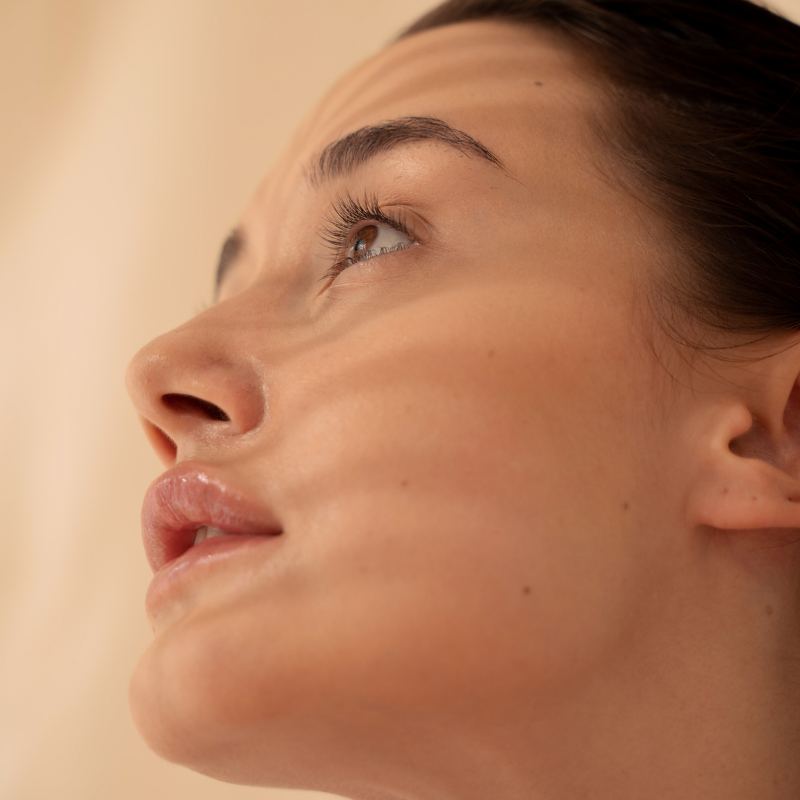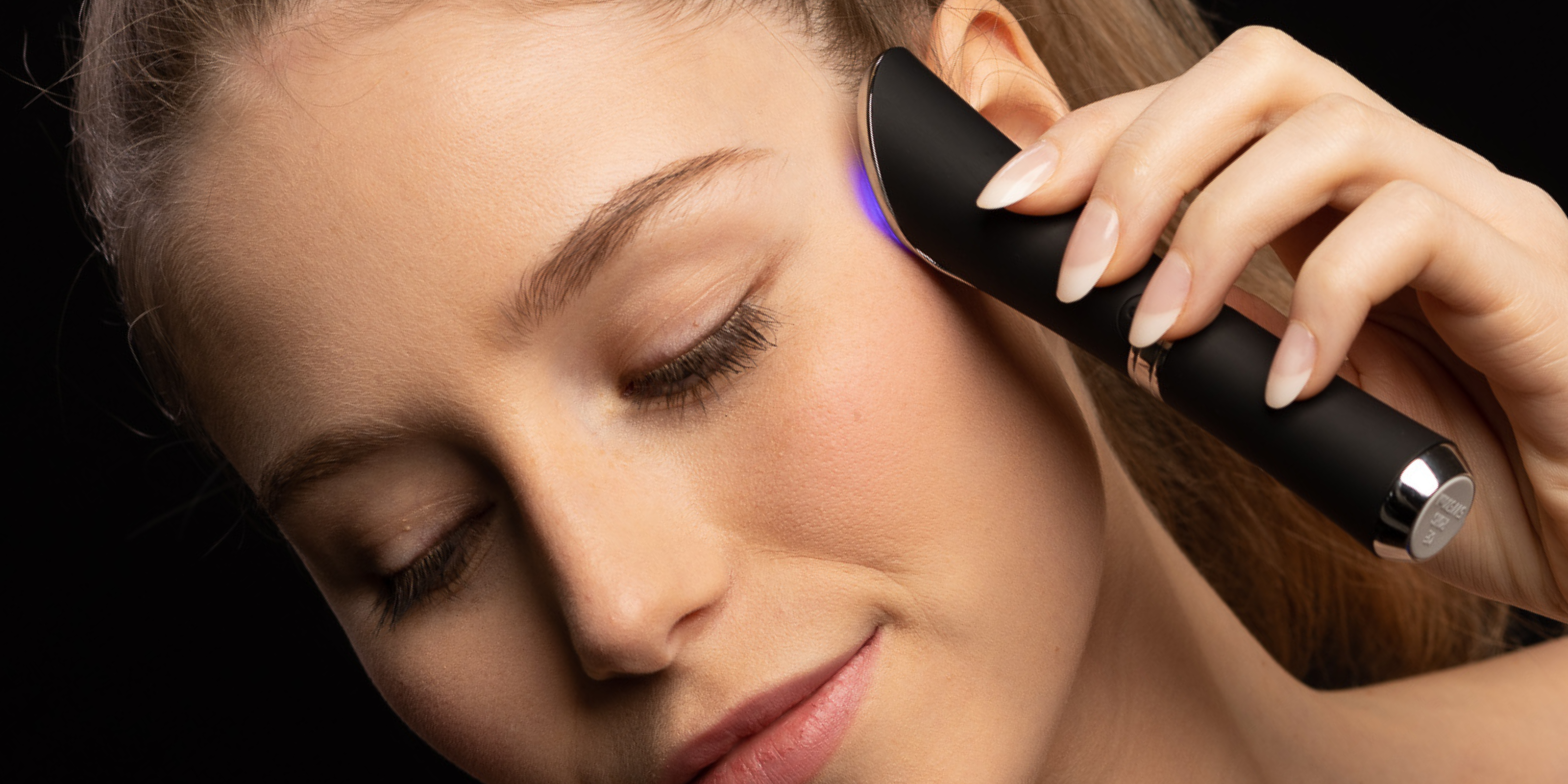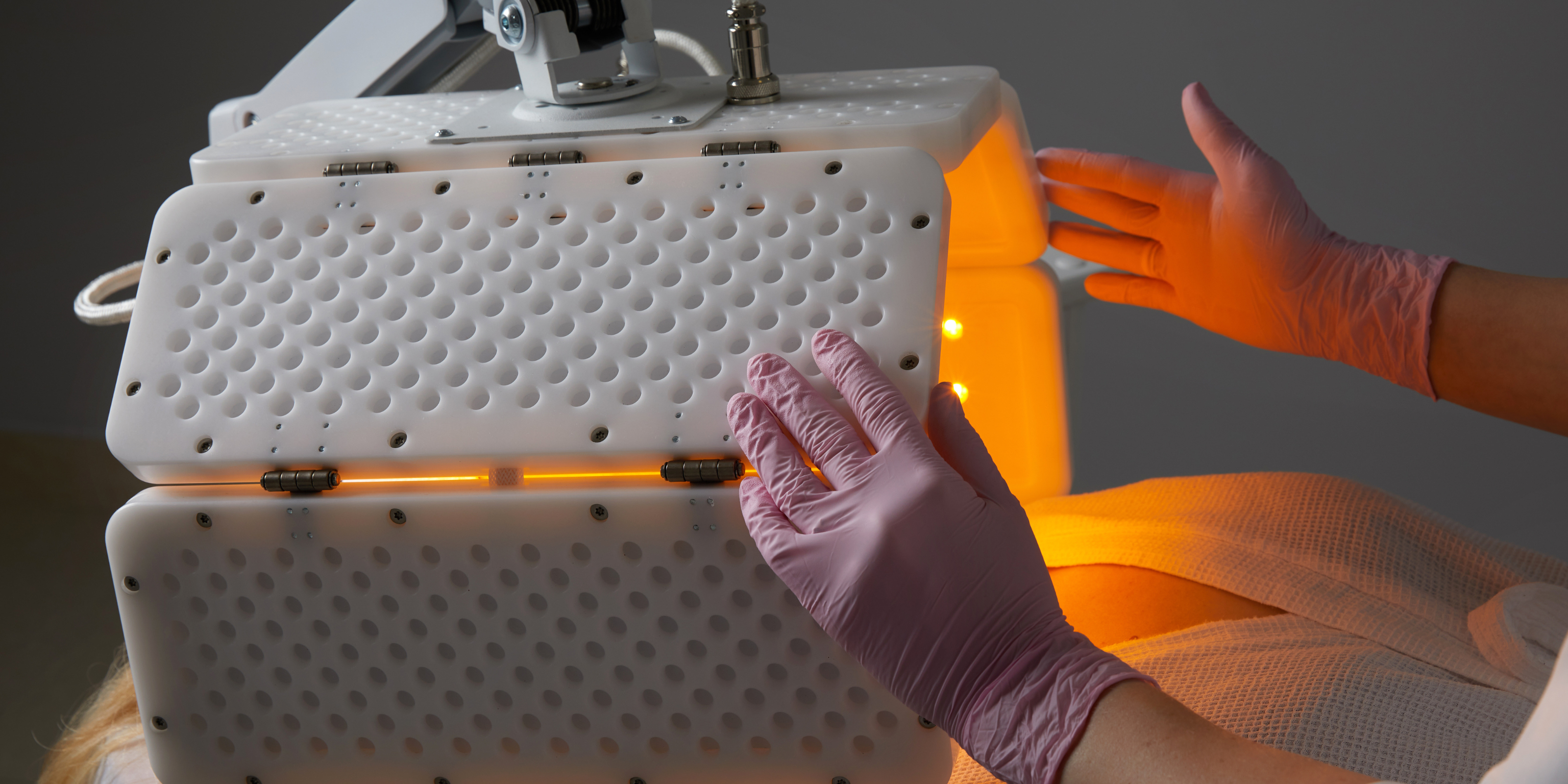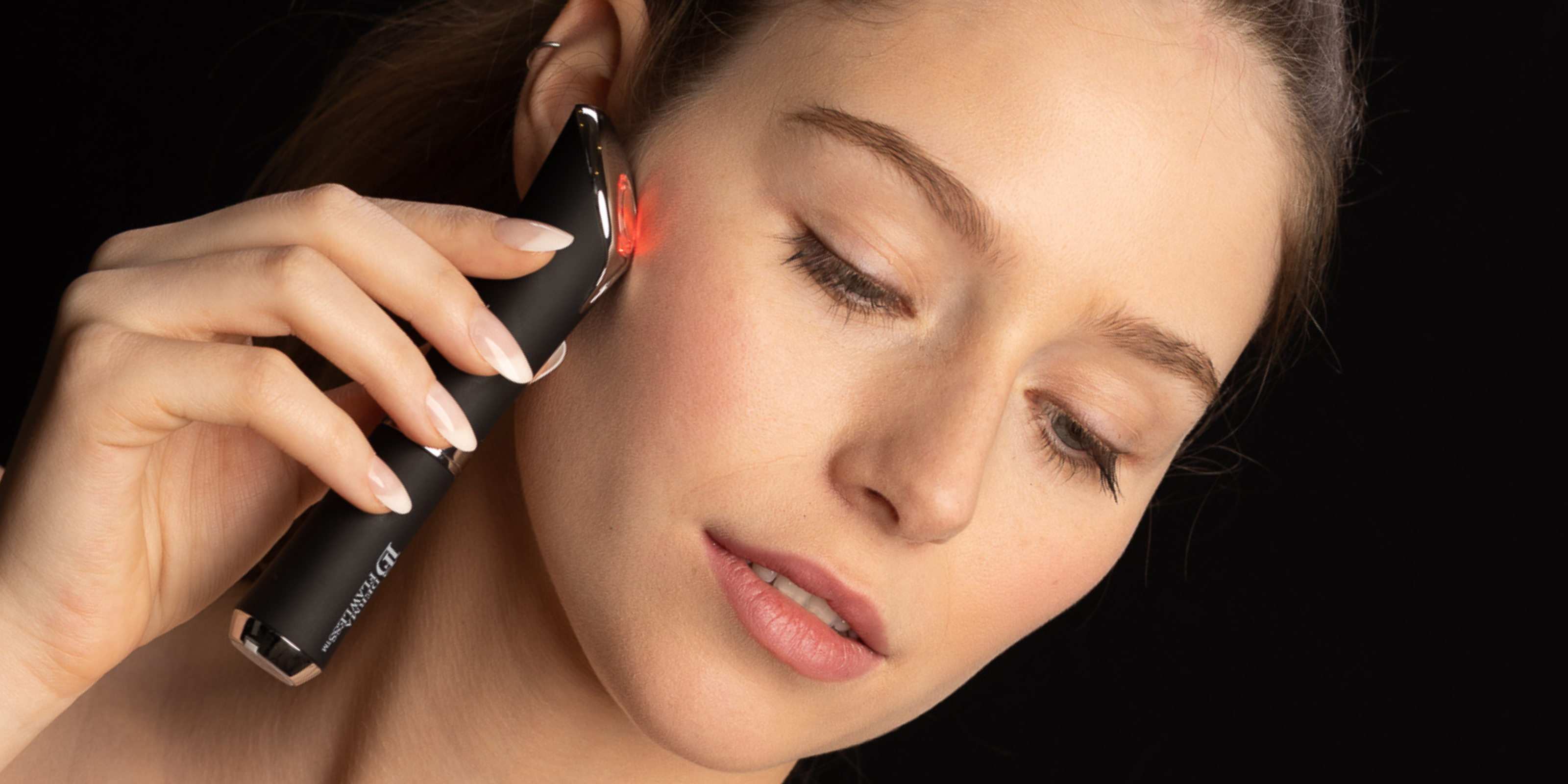LED therapy, also known as phototherapy or light therapy, is a non-invasive treatment that utilizes specific wavelengths of light to rejuvenate the skin. By emitting light at precise wavelengths, LED therapy stimulates cellular responses in the skin, promoting collagen production, reducing inflammation, and improving skin texture and tone. The concept of using light for therapeutic purposes has ancient roots, with early civilizations recognizing the healing potential of sunlight. In modern times, LED therapy gained momentum in the 20th century, with NASA's discovery of its wound-healing properties. Today, LED therapy continues to evolve with advancements in LED technology, offering a safe and effective approach to skin rejuvenation.
LED therapy works by delivering specific wavelengths of light to the skin, targeting different layers and cellular processes. Red light, ranging from 620 to 700 nanometers, penetrates deeper into the skin and stimulates fibroblasts to produce collagen, resulting in improved skin elasticity and reduced wrinkles. Blue light, with wavelengths between 405 and 470 nanometers, targets acne-causing bacteria, reducing inflammation and promoting clearer skin. Scientific research supports the efficacy of LED therapy, showing its ability to fade scars, minimize inflammation, and improve overall skin health. With its non-invasive nature and proven benefits, LED therapy offers a promising avenue for achieving a revitalized and radiant complexion.
At the core of the captivating world of LED therapy, light-sensitive molecules known as chromophores take center stage, assuming a vital role in the intricate processes that unfold. Acting as receptive receptors, these remarkable molecules eagerly absorb specific wavelengths of light, much like a key finding its rightful place within a lock. This intricate dance between light and chromophores sets the stage for the enchanting magic of light therapy, triggering a cascade of cellular responses that contribute to its profound therapeutic effects. Through this harmonious interplay, light therapy harnesses the power of cellular rejuvenation, promoting healing, revitalization, and balance within our bodies. It is the interwoven relationship between light and chromophores that unlocks the transformative potential of light therapy, offering a captivating pathway to improved well-being and a renewed sense of vitality.
When light interacts with these chromophores, a cascade of cellular events is set in motion. Different wavelengths of light have distinct effects on our physiology, triggering diverse physiological responses. For instance, certain wavelengths can stimulate cellular regeneration, promoting the repair and rejuvenation of tissues. Others can modulate our circadian rhythms, synchronizing our internal body clock and improving sleep patterns. Moreover, specific wavelengths have been found to possess anti-inflammatory properties, reducing swelling and inflammation within tissues.
This dynamic interplay between light and our cells showcases the immense potential of light therapy in promoting wellness and healing. By harnessing the power of targeted light wavelengths, we can unlock the extraordinary ability of our cells to restore, rejuvenate, and rebalance themselves. So, join us on this enlightening journey through the cellular wonders of light therapy and discover the profound impact it can have on our well-being.
In LED therapy, various colors of light are used to target specific skin concerns and promote desired physiological responses. Each color corresponds to a specific wavelength range, and these wavelengths determine the depth of light penetration into the skin and the specific cellular processes affected.
Red light, ranging from 620 to 700 nanometers, plays a significant role in LED therapy. This special wavelength has an amazing ability to boost collagen production, a key protein that keeps our skin elastic and firm. When red light is absorbed by the skin, it goes deeper into the layers and activates fibroblast cells, which are like collagen factories in our body. These hardworking fibroblasts start producing more collagen, leading to a reduction in pesky fine lines, wrinkles, and sagging skin. The result? A refreshed and youthful complexion that radiates with renewed vitality.
Blue light, ranging from 405 to 470 nanometers, is particularly effective in targeting acne-causing bacteria. It penetrates the skin's surface and reaches the sebaceous glands, where Propionibacterium acnes (P. acnes) bacteria reside. Blue light has been shown to induce a phototoxic effect on these bacteria, leading to their destruction. By reducing the population of P. acnes, blue light therapy can help alleviate acne symptoms, including inflammation, redness, and breakouts. It is also effective in reducing hyperpigmentation and swelling.
While red and blue lights are the most commonly used in LED therapy, other colors such as green, yellow, and near-infrared have also shown promise in certain applications. Each color offers unique benefits and effects on the skin, making LED therapy a versatile and customizable treatment modality
The field of light therapy is continuously advancing, with ongoing research shedding new light on its potential applications and refining its techniques. Advancements in LED technology have paved the way for more efficient and targeted treatments. The use of personalized light therapy based on an individual's specific needs and characteristics holds promise for optimizing treatment outcomes and maximizing therapeutic benefits.
Moreover, integrating light therapy with other treatment modalities shows great potential for enhancing overall skin health and well-being. Combining light therapy with pharmacological interventions, cognitive therapies, or other complementary approaches can create synergistic effects and expand the scope of treatment possibilities.
Light therapy has revolutionized healthcare and wellness practices, particularly in the realm of facial anti-aging treatments. By harnessing the natural power of light, it offers a transformative approach to skincare and treatment. The potential of light therapy to improve well-being and enhance quality of life is immense. As research continues to advance and technology evolves, light therapy is poised to open doors to innovative and highly effective treatments. It holds the promise of a brighter future in healthcare, where the rejuvenating effects of light can be harnessed to combat the signs of aging and promote a youthful, radiant appearance. Light therapy is an exciting frontier that brings hope and optimism to the field of anti-aging, offering new possibilities for maintaining and restoring youthful vitality.
Why you should start using LED therapy on your face?
Boosts Collagen
LED therapy stimulates collagen synthesis, which enhances the skin's elasticity and firmness. This process helps reduce the appearance of wrinkles, resulting in a more youthful and rejuvenated complexion.
Restores vibrant complexion
LED therapy promotes improved blood circulation, speeds up the renewal of skin cells, and revitalizes texture, resulting in a radiant and vibrant complexion that reflects youthfulness and vitality.
Restores even tone
LED therapy corrects pigmentation, reduces discoloration, and restores an even skin tone, revealing a complexion that is smooth, balanced, and radiant with a harmonious and uniform appearance.
Discover Our Devices
DERMA BUNDLE
DERMAJADE-X & DERMA V-LIFT COMBO
DERMAJADE-X
EYE CONTOUR DEVICE
DERMA V-LIFT
FACIAL SCULPTING DEVICE












